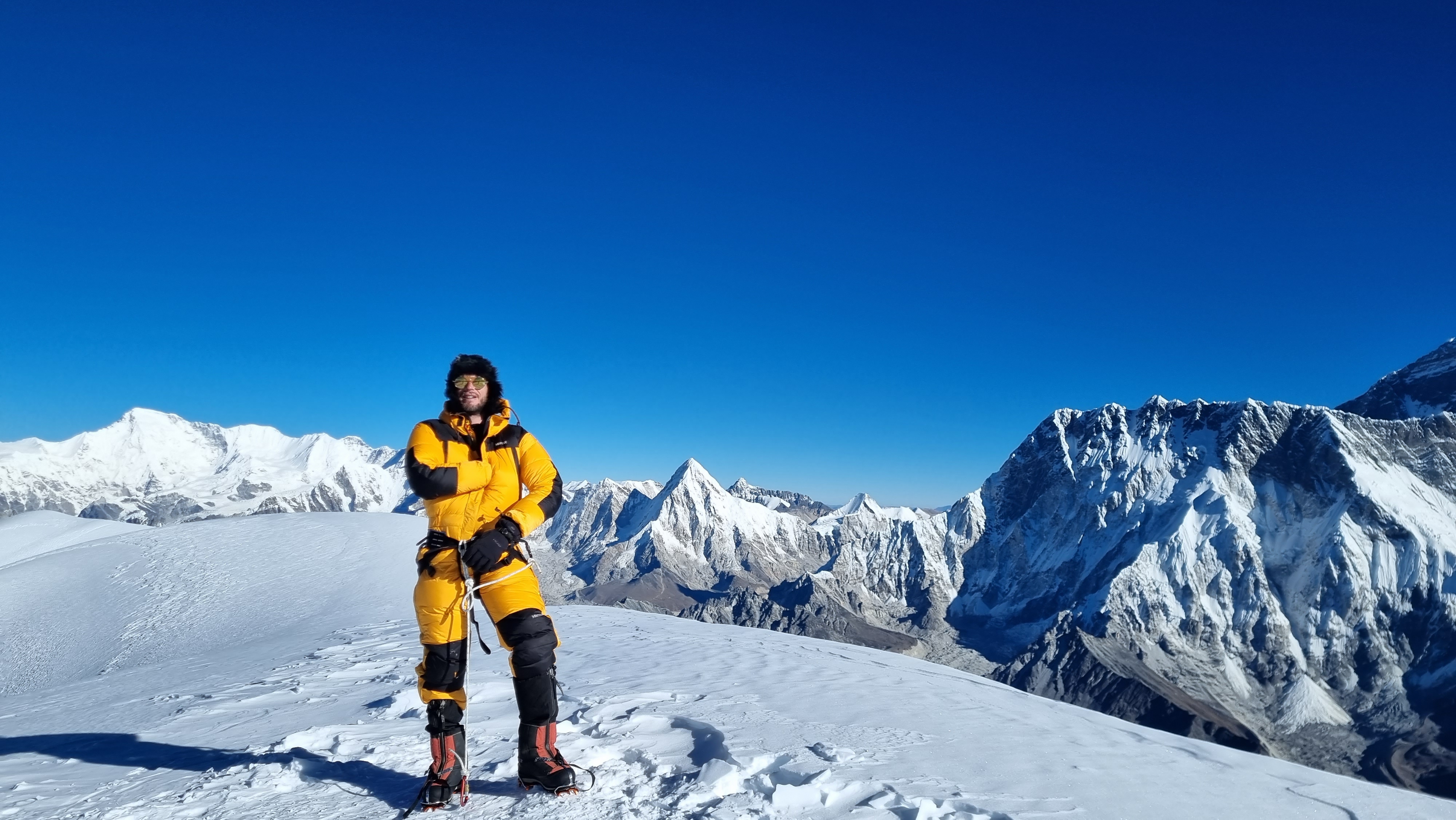Ama-Dablam Expedition
Overview
Ama Dablam (6,814m) situated at the top above the Imja Khola valley in the Khumbu, just above the summer settlement of Dingboche and on the south eastern area from the village of Pangboche, it is regarded as one of the most beautiful mountain in the whole of Himalaya and probably in the world. The name Ama Dablam is derived from the Tibetan language meaning Mother with a Jewel Box, one can make it out if carefully observed from its south western face just near the neck of the peak a large chunk of ice lies dangling like a small jewel box. It is becoming popular among the hardy mountaineers to summit this beautiful peak, which is much technical from either side of this mountain, perched near the Imjatse Valley and Panch Pokhari region.
Ama Dablam is one of the most stunning peaks in the Himalaya. Situated in the heart of Everest's Kumbu region, it lies next to well-worn path to Everest Base Camp and is admired by thousands of trekkers and climbers every year. This expedition offers a superb climbing experience in a magnificent setting, with numerous culture and scenic diversions. The mountain's impressive beauty has made it a highly coveted prize for climbers. Since its first ascent 1961 by and Anglo-American New Zealand team, it has been climbed frequently and by many different routes.
Our route will be by the original South West Ridge. This gives a superb climb, sustained at a reasonable level of difficulty and with good camp platforms at strategic points along the route. Apart from one short section it is objectively very safe. A route description is included in the detail.
Ama Dablam is one of the most stunning peaks in the Himalaya. Situated in the heart of Everest's Kumbu region, it lies next to well-worn path to Everest Base Camp and is admired by thousands of trekkers and climbers every year. This expedition offers a superb climbing experience in a magnificent setting, with numerous culture and scenic diversions. The mountain's impressive beauty has made it a highly coveted prize for climbers. Since its first ascent 1961 by and Anglo-American New Zealand team, it has been climbed frequently and by many different routes.
Our route will be by the original South West Ridge. This gives a superb climb, sustained at a reasonable level of difficulty and with good camp platforms at strategic points along the route. Apart from one short section it is objectively very safe. A route description is included in the detail.
Trip Highlights
- High alpine valleys in the shade of the mighty Number One 'Mt. Everest.
- Traditional village and land of worlds heritage
- Warm-friendly locals
- Rich Buddhist culture
Itinerary
Day 1: Arrive Kathmandu shift to the Hotel (1,300m)
On arrival at Kathmandu Tribhuvan International Airport you will be received by our staff and transfer you to the Hotel, where our guide will give you a brief orientation of the Hotel, Kathmandu, Trek/Camping, do's and don't and other related information that you might require while in Nepal.
Day 2: perpetration day
Day 3: Fly from Kathmandu to Lukla and trek to Phakding 2,650m 3-4 hrs.
Day 4: Trek to Namche Bazaar 3,440m 5-6 hrs.
Day 5: A day in Namche Bazaar.
Day 6: Trek to Thangboche 3,867m 4-5 hrs.
Day 7: Trek to Dingboche
Day 8: Trek to Lobuche
Day 9: Trek to Gorakshep, visit Everest Base Camp
Day 10: Trek to Kala Patthar, trek to Pangboche
Day 11: Trek to Ama Dablam Base Camp approx. 4,580m. 4-5 hrs.
Day 12: Rest Day at Base Camp.
Day 13: Ascent of Ama Dablam.
Day 14: From Camp I
Day 15: From Camp II:
Day 16: Cleaning up at Base Camp.
Day 17: Trek to Thyangboche. 4-5 hrs.
Day 18: Trek to Monjo via Namche Bazaar. 5-6 hrs.
Day 19: Trek back to Lukla. 4-5 hrs.
Day 20: Fly Lukla-Kathmandu.
Day 21: Transfer to Airport for the International departure.
Video
All Inclusive Cost
USD 5300
Per Person
BOOK NOW QUICK ENQUIRY- Best Price Guarantee
- Hassle-Free Booking
- Team of highly experienced Experts
You may also like !!
Our Best Selling Packages You May Like.






